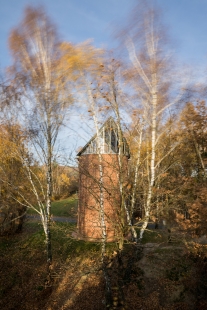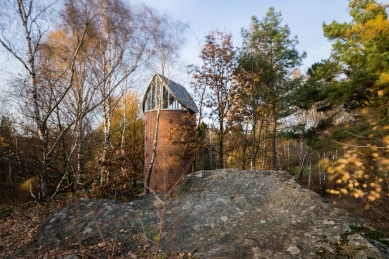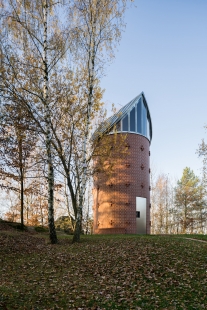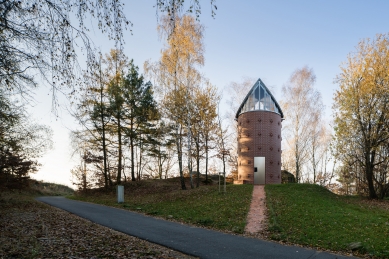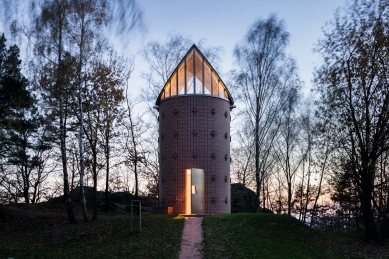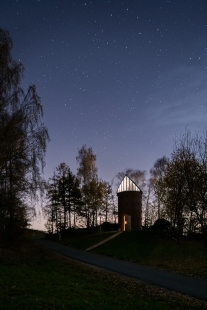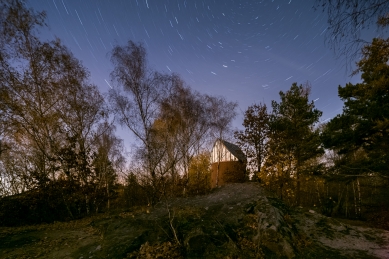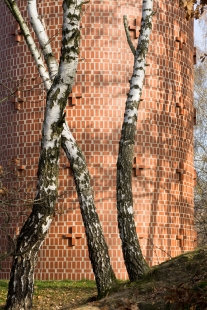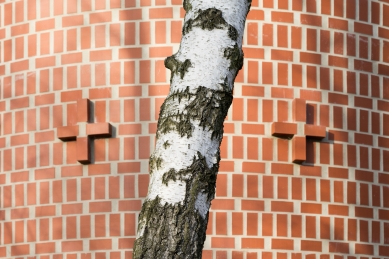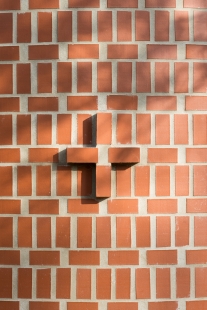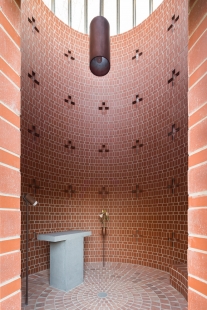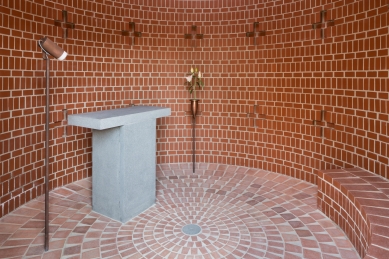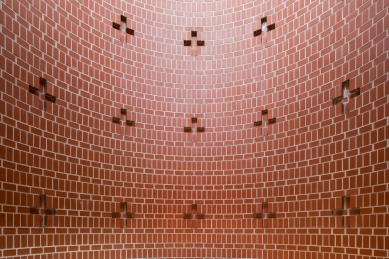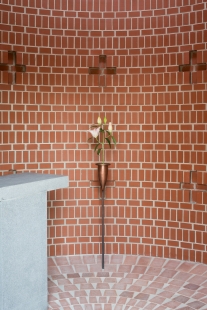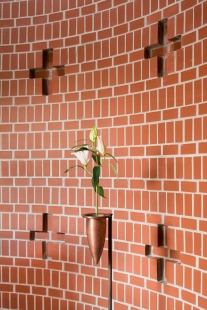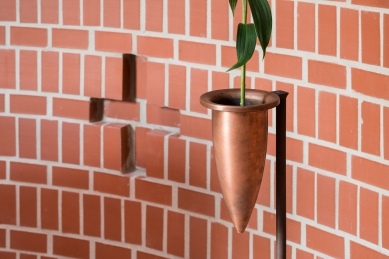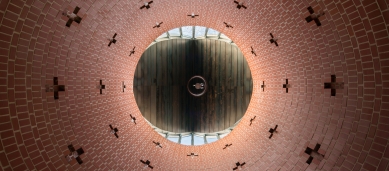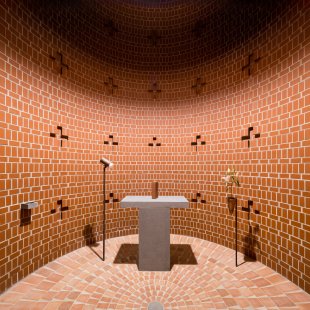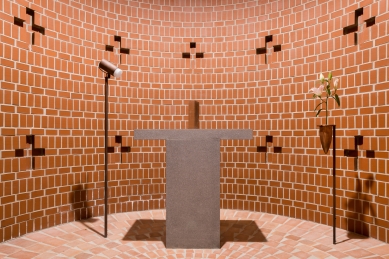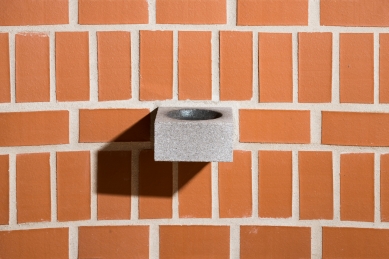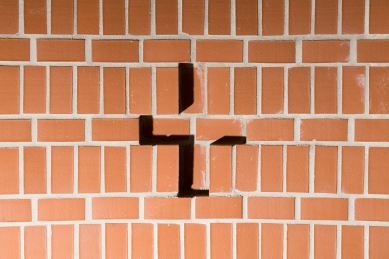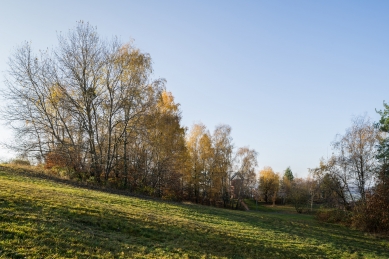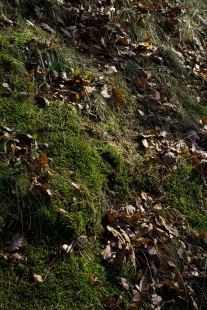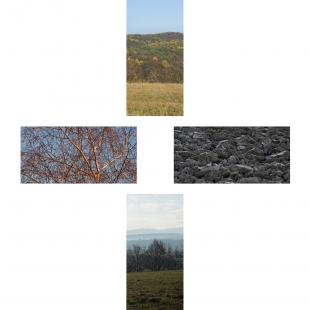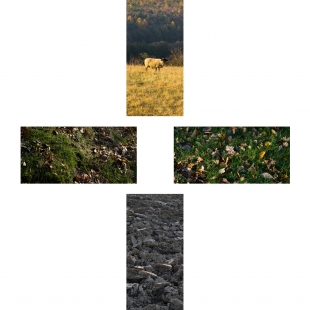
The Chapel of St. Anthony of Padua

The final is a simple circular building closed with a gabled roof. The circle expresses the cyclical nature of the universe as well as all life on Earth. The form of the chapel creates a shelter, a quiet inner space made for contemplation. The sobriety of the building is based on the values of St. Francis of Assisi and the fanciscan Order of Friars Minor, among which was St. Anthony accepted. Those are poverty, absence of privileges, hermitage and education. The chapel honors this simplicity, honors the material and historical context, values the industrial aesthetics and the specifics of the region.
Although the object is significant, its significance is achieved in a humble way. Natural masonry is the primary building element. Apart from the perimeter wall, masonry is also used for other structures as much as possible. The building does not employ the mind with its details and materials, but offers its space for meditation. An important element of the interior is its emptiness, because the raw material creates space and its image at the same time.
The interior offers a strong sense of intimacy with the intention of the gaze of each visitor almost inevitably going up. Instead of frescoes and domes they will see in the dark emptiness a light canopy entering through the roof to the interior.
The details of the chapel are adapted to the circular character of the building. The interior equipment such as the pulpit, the bench, the hanging light and the stand with the vase for lilies in a collective interplay symbolically underline the truthfulness and modesty of the saint to whom the chapel is dedicated.
Although the object is significant, its significance is achieved in a humble way. Natural masonry is the primary building element. Apart from the perimeter wall, masonry is also used for other structures as much as possible. The building does not employ the mind with its details and materials, but offers its space for meditation. An important element of the interior is its emptiness, because the raw material creates space and its image at the same time.
The interior offers a strong sense of intimacy with the intention of the gaze of each visitor almost inevitably going up. Instead of frescoes and domes they will see in the dark emptiness a light canopy entering through the roof to the interior.
The details of the chapel are adapted to the circular character of the building. The interior equipment such as the pulpit, the bench, the hanging light and the stand with the vase for lilies in a collective interplay symbolically underline the truthfulness and modesty of the saint to whom the chapel is dedicated.
Karel Filsak architekti
1 comment
add comment
Subject
Author
Date
...
Bohdan
22.07.22 02:17
show all comments


